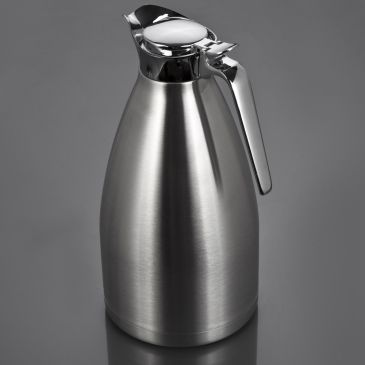A thermos jug becomes quite handy when you want to keep things at a constant temperature. This means that if you put a hot beverage into a thermos bottle or jug it will remain hot and similarly cold drinks will stay cold for a long time. Now we need to understand the working of a thermos flask and for this we need to understand how heat travels.
How Heat Travels
Heat is an energy that travels through three phenomenon known as conduction, convection and radiation.
• Conduction – This causes the transfer of heat from one mass to another when they touch just like heat flows into our body when we touch something that is hot.
• Convection – This phenomenon happens without direct touch for instance if you turn on a fan heater it will blow hot air into the room. Hot air is lighter than cold air so it will rise upwards. In doing so it pushes the cold air out of the way so the cool air near the ceiling travels downwards towards the floor while the heater again lets out hot air and the cycle goes on warming the room. When heat moves in this manner with the help of a mobile liquid or gas it is called convection. An example of convection heating is when you heat soup in a saucepan.
• Radiation – This phenomenon is slightly different from both convection as well as conduction. When objects are heated they radiate light which is why camp fires have red, orange and yellow flames. This is because the heat energy from the fire excites the atoms in the objects and makes them unstable. As they are unstable these atoms quickly return to their normal state and give off the energy in the form of light. Sometimes the light from the unstable atoms may even be invisible and if the light produced by them is too intense it is known as infrared radiation which cannot be seen by the eyes but felt as heat instead. This is why old fashioned incandescent lamps are hot to the touch even though they have glass and vacuum surrounding them. This process of heat transfer is called radiation.
Why Coffee Gets Cold
The temperature of boiling water is 100 degrees Celsius or 212 degree Fahrenheit while the room temperature on a moderate day should be somewhere around 15 to 20 degrees Celsius. Due to the fact that the water that you have heated, is much hotter compared to the room, the heat from the coffee pot flows rapidly into the surroundings. Some heat is also lost due to conduction because the coffee mug or pot will be placed on a worktop or table and the heat will directly flow downwards. The heat emanating from the coffee pot or mug will heat the air around it which will start moving which causes more heat loss due to convection and some heat is also lost due to radiation. All these three factors of conduction, convection and radiation will cause even piping hot coffee to become completely cold within an hour. Hence it can be said that if you want your coffee to stay hot you need to stop conduction, convection and radiation and this can be done by pouring the coffee into a thermos jug or flask.

How a Vacuum Flask Works
A vacuum flask is essentially a highly insulated jug. Most versions of this product have an outer plastic or metal case and an inner lining chamber which have two layers of glass between them. What’s more these glass layers are also separated by a vacuum and the glass is coated with a reflective layer of metal. Flasks which are unbreakable do not contain glass and instead there are two layers of stainless steel with a reflecting layer and a vacuum between them. To add to the insulation there is a screw down lid on the top.
With the help of these simple features almost all heat transfer due to conduction, convection and radiation is prevented. The conduction is prevented by vacuum, the tight lid ensures that no air can leave or enter the flask eliminating convection and radiation is prevented by the reflective inner lining of chamber. In this manner virtually no heat can escape the flask keeping the liquids hot for a long time. Just like heat cannot escape the flask it cannot penetrate into the flask either, which ensures that cold items remain cold in the thermos jug.